A crystal puzzle is a 3D jigsaw puzzle with transparent, interlocking pieces, creating a dazzling crystal-like structure․ It enhances cognitive skills and offers a relaxing, creative challenge․

What is a Crystal Puzzle?
A crystal puzzle is a 3D jigsaw puzzle composed of transparent, interlocking pieces that form a dazzling, crystal-like structure when assembled․ Unlike traditional puzzles, it uses clear, flat-edged pieces that fit together seamlessly․ The puzzle is typically made of foam-backed pieces laminated with paper, making it soft on hands and easy to handle․ Each piece is designed to interlock with others, creating a sturdy and visually striking final shape․ The goal is to assemble the pieces into a specific 3D form, often resembling a geometric or decorative object․ Solving it requires patience, spatial reasoning, and attention to detail․ The crystal puzzle offers a unique combination of art, challenge, and relaxation, making it a popular choice for puzzle enthusiasts of all ages․
History of Crystal Puzzles
Crystal puzzles have their roots in traditional jigsaw puzzles but evolved with modern materials and designs․ Originating in the early 2000s, they gained popularity for their unique 3D, transparent structure․ Unlike flat puzzles, crystal puzzles introduced a new dimension, challenging users to build a three-dimensional object․ Their design involved clear, interlocking pieces made from foam-backed materials, making them durable and visually appealing․ Over time, crystal puzzles became popular worldwide, offering a creative outlet and cognitive challenge․ They are now celebrated for their artistic and intellectual appeal, blending art and problem-solving into a single, rewarding experience․ This innovative approach to puzzling has made crystal puzzles a favorite among enthusiasts seeking both relaxation and mental stimulation․
Benefits of Solving Crystal Puzzles
Solving crystal puzzles offers numerous cognitive and emotional benefits․ It enhances spatial reasoning and problem-solving skills, as users visualize and assemble 3D structures․ The process boosts memory and concentration, requiring attention to detail and logical thinking․ Crystal puzzles also provide a calming, meditative experience, reducing stress and fostering patience․ Additionally, completing a puzzle gives a sense of accomplishment, improving self-esteem and confidence․ It’s an excellent activity for all ages, promoting mental sharpness and creativity․ Regular engagement with crystal puzzles can also strengthen hand-eye coordination and fine motor skills․ Overall, crystal puzzles are a rewarding hobby that combines intellectual challenge with therapeutic relaxation, making them a popular choice for those seeking both mental stimulation and personal growth․
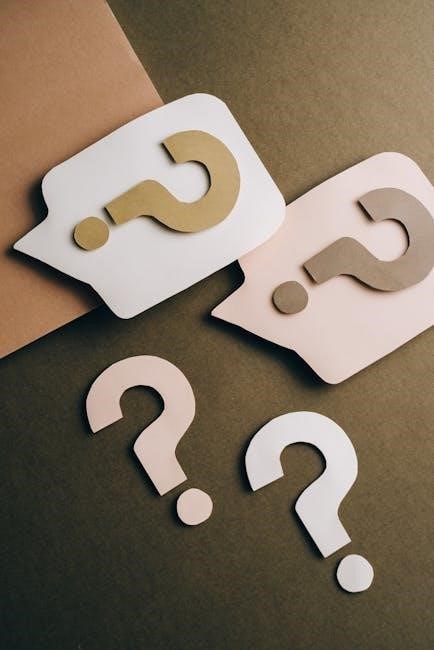
Preparing for the Crystal Puzzle
Preparation involves sorting pieces by color and shape, identifying flat edges, and cleaning them․ Organizing and planning ensure a smooth assembly process․
Sorting the Puzzle Pieces
Sorting crystal puzzle pieces is the first crucial step․ Begin by separating pieces with flat edges, as these typically form the base․ Next, group remaining pieces by color or shape to simplify assembly․ Pay attention to how pieces might connect, noting tabs and slots․ Organize pieces in a way that makes them easy to access, such as using trays or containers․ For efficiency, sort pieces into smaller batches, focusing on one section at a time․ This methodical approach ensures a smoother assembly process and reduces frustration․ Writing down the sequence of steps or referencing diagrams can also help maintain clarity․ Sorting is foundational to solving the puzzle successfully․
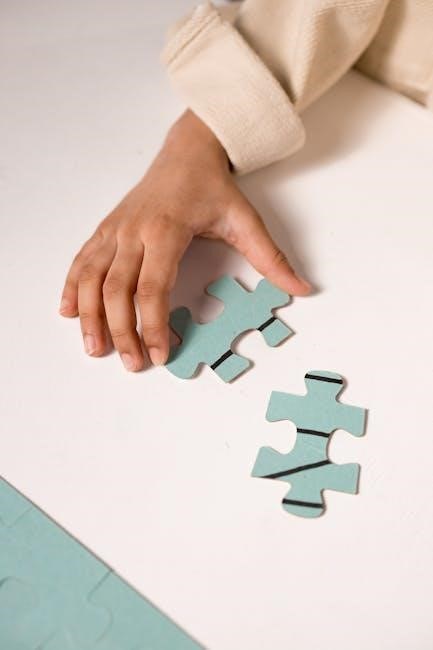
Identifying Flat Edges
Identifying flat edges is essential for building the puzzle’s foundation․ Flat-edged pieces are typically found on the puzzle’s base and are crucial for stability․ Examine each piece carefully, as flat edges can be subtle․ These pieces usually lack protrusions or tabs, featuring smooth sides instead․ Once identified, set them aside to form the starting point of your assembly․ Pieces with flat edges often connect directly to each other, forming a solid base․ Without these, the puzzle may wobble or fail to hold its shape․ Pay close attention to these pieces, as they are the cornerstone of your crystal puzzle․ Their correct placement ensures a sturdy structure and sets the stage for attaching the remaining pieces seamlessly․
Cleaning the Pieces
Cleaning the pieces before assembly ensures a smooth and enjoyable puzzle-solving experience․ Dust, fingerprints, or debris can interfere with how pieces fit together․ Gently wipe each piece with a soft, dry cloth to remove surface dirt․ For more stubborn marks, dampen the cloth with water, but avoid soaking the pieces․ Never use harsh chemicals or abrasive materials, as they may damage the puzzle’s finish․ Once cleaned, allow the pieces to air dry completely before handling․ This step prevents moisture from causing pieces to stick together or leave residue․ A clean set of pieces ensures optimal performance and maintains the puzzle’s clarity and aesthetic appeal․ Regular cleaning also extends the lifespan of your crystal puzzle, keeping it pristine for future use․
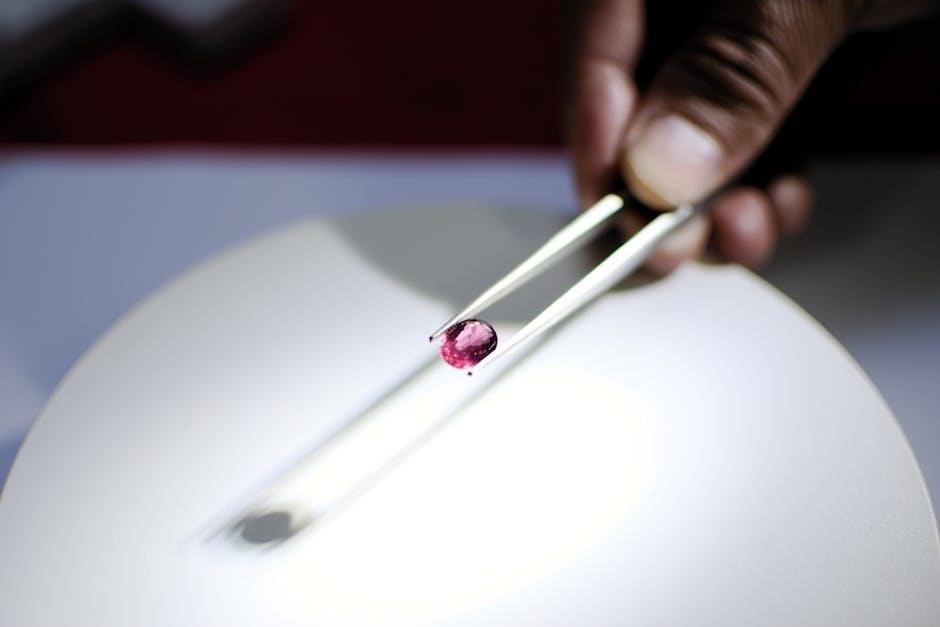
Understanding the Assembly Process
Mastering the assembly process involves building a stable base, attaching sides carefully, and completing the top layer․ Patience and precision ensure a flawless crystal structure emerges․
Building the Base
Building the base is the foundation of your crystal puzzle․ Start by identifying flat-edged pieces, as these form the bottom layer․ Arrange them in a square or rectangular shape, ensuring they fit snugly together․ Use the diagram as a guide to confirm the correct layout․ Once the base is complete, it provides stability for the rest of the puzzle․ Take your time to ensure each piece aligns perfectly, as a sturdy base is crucial for the overall structure․ Avoid forcing pieces together, as this can damage them․ A well-constructed base sets the stage for a successful assembly process․
Attaching the Sides
Attaching the sides is the next step after building the base․ Start by selecting pieces that match the edges of the base․ These pieces typically have one flat edge and interlocking tabs․ Align each side piece with the corresponding base edge, ensuring the tabs fit securely․ Use the diagram to confirm the correct placement․ Once a side piece is attached, gently press it down to ensure a snug fit․ Avoid forcing pieces, as this could damage them․ Continue this process for all sides, working your way around the puzzle․ Make sure the sides align evenly and maintain the puzzle’s balance․ This step requires patience and attention to detail to ensure the structure remains stable and visually appealing․ Properly attached sides will support the top layers and complete the puzzle’s framework․
Completing the Top
Completing the top layer is the final step in assembling your crystal puzzle․ Once the base and sides are secure, focus on the remaining pieces that fit the top edges․ These pieces often have unique shapes or colors to guide placement․ Use the diagram to identify their positions and ensure they align seamlessly with the sides․ Gently press each piece into place, checking for a snug fit․ If a piece doesn’t align, double-check its orientation or try an alternative piece․ The top layer should sit evenly, completing the puzzle’s symmetrical design․ Handle the pieces carefully to avoid damage․ Once the last piece is in place, step back and admire your completed crystal puzzle, a testament to your patience and problem-solving skills․

Visualizing the 3D Shape
Visualizing the 3D shape is crucial for assembling crystal puzzles․ Study diagrams to understand the final form, then divide the puzzle into layers for easier alignment of pieces․
Dividing the Puzzle into Layers
Dividing the crystal puzzle into layers simplifies the assembly process․ Start by identifying distinct layers based on the diagram or visual guide provided․ Each layer typically consists of a specific set of pieces that fit together to form a section of the final shape․ Sort the pieces by their position in each layer, focusing on the flat edges and color patterns․ Begin with the base layer, ensuring it is stable and correctly aligned․ Once the base is complete, move upward, layer by layer, matching edges and shapes carefully․ This methodical approach prevents confusion and ensures each piece fits seamlessly into its designated spot, gradually revealing the crystal puzzle’s stunning 3D form․
Using Diagrams for Guidance
Diagrams are essential tools for guiding you through the crystal puzzle assembly process․ Study the provided visual guides to understand the puzzle’s structure and piece placement․ Diagrams often highlight color patterns, shapes, and layer orientations, helping you identify where each piece belongs․ Online resources and instructional videos can also offer step-by-step visual aids, making it easier to follow along․ Pay close attention to the diagrams’ details, such as flat edges and matching colors, to ensure accurate placement․ If you’re unsure about a piece’s position, refer back to the diagram for clarification․ This visual guidance will help you build confidence and avoid mistakes, making the assembly process more enjoyable and rewarding․ Slowing down videos or zooming in on diagrams can further enhance your understanding of complex sections․

Troubleshooting Common Issues
Encountering mismatched pieces or incorrect assembly? Re-examine the instructions and diagrams for guidance․ Ensure all pieces are sorted and flat edges aligned properly before proceeding․
Dealing with Mismatched Pieces
If pieces don’t fit, reassess the base structure․ Ensure all edges are correctly aligned and colors match․ Re-sort pieces by shape and color, focusing on flat edges first, to avoid mismatches․ Double-check the diagrams for visual cues․ Sometimes, rotating a piece slightly can make it fit seamlessly․ If issues persist, retrace your steps from the base upwards, verifying each layer’s accuracy․ Patience is key; methodical re-examination often resolves the problem․ This step-by-step approach ensures a smooth and enjoyable assembly process․
Re-examining the Instructions
Re-examining the instructions is crucial when stuck․ Review the step-by-step guide to ensure accuracy․ Pay attention to diagrams and written cues, as they often highlight specific assembly points․ If instructions are unclear, online resources or video tutorials can provide additional clarity․ Slowing down the process and methodically following each step can help avoid errors․ Taking notes on the sequence of piece placement may also aid in understanding․ This systematic approach ensures that each piece fits correctly, leading to a successful assembly․ Patience and thoroughness are essential when revisiting the instructions to achieve the desired result․
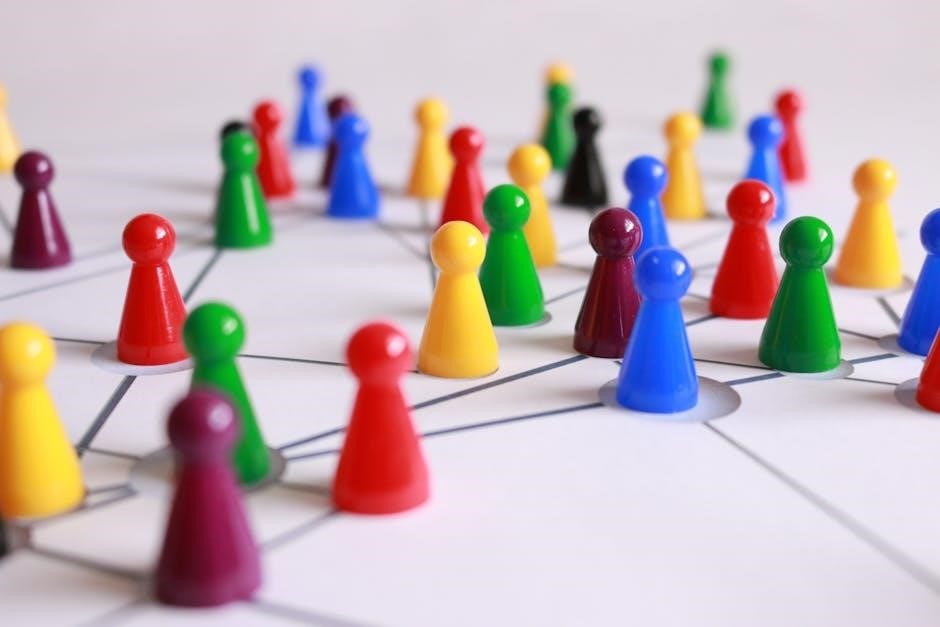
Tips and Tricks for Success
Mastering crystal puzzles requires patience, strategy, and attention․ Start with smaller puzzles to build skills and confidence․ Use online resources for hints and visual guides to aid assembly․ Sort pieces by color and shape to streamline the process․ Work on a flat surface and avoid forced fits to prevent damage․ Take breaks to maintain focus and enjoy the journey to the final, dazzling crystal structure․ These tips ensure a rewarding and enjoyable puzzle-solving experience․
Following Hints and Clues
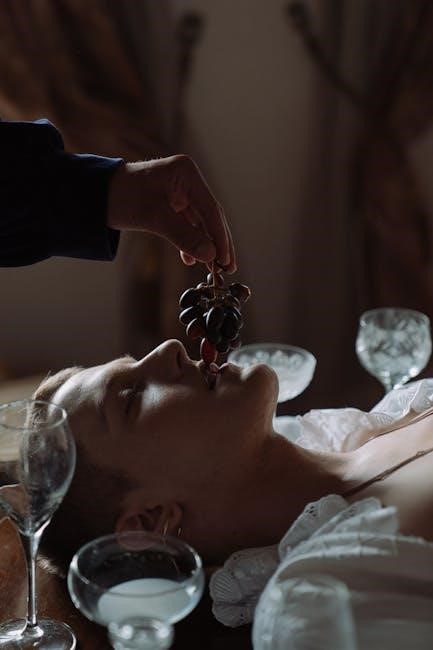
Utilizing hints and clues is crucial for mastering crystal puzzles․ Many puzzles include subtle hints within the instructions or design․ Look for color patterns, shapes, or sequences that guide piece placement․ Online resources often provide step-by-step guides or videos to help visualize the assembly process․ Write down the sequence of steps or slow down instructional videos to better understand complex moves․ Additionally, some puzzles include hidden clues like symbols or markings on the pieces․ Organize these clues logically and refer back to them when stuck․ Patience is key—don’t rush the process․ By carefully following hints and clues, you’ll navigate challenges more efficiently and enjoy the problem-solving journey․ This systematic approach ensures a smoother and more rewarding experience․
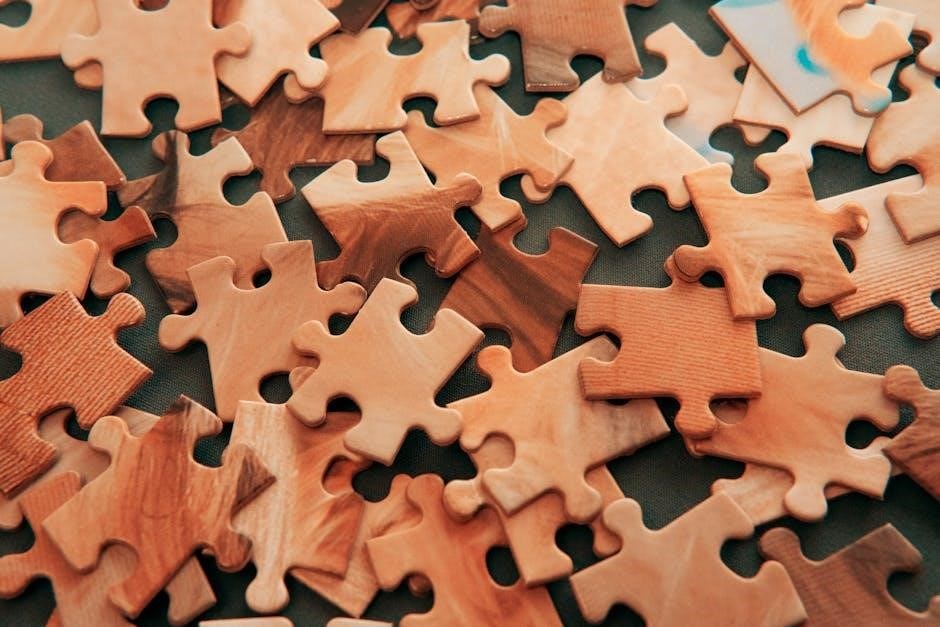
Practicing with Smaller Puzzles
Starting with smaller puzzles is an excellent way to build confidence and develop problem-solving skills․ Smaller puzzles offer a manageable challenge, allowing you to understand the mechanics of crystal puzzles without feeling overwhelmed․ Begin with puzzles that have fewer pieces to grasp basic techniques, such as identifying flat edges and sorting pieces by color or shape․ As you progress, gradually move to slightly larger puzzles to refine your skills․ This step-by-step approach helps you develop patience and persistence, essential for tackling more complex designs․ Additionally, smaller puzzles provide a sense of accomplishment, motivating you to take on bigger challenges․ By mastering smaller puzzles, you’ll gain the knowledge and confidence to approach larger, more intricate crystal puzzles effectively․
Importance of Patience
Patience is a cornerstone of successfully solving crystal puzzles․ These intricate 3D structures require time and attention to detail, as rushing can lead to frustration․ Taking a calm and steady approach ensures that each piece is placed correctly, reducing the risk of errors․ Patience helps you stay focused and enjoy the process, transforming the activity into a meditative experience․ It allows you to appreciate the puzzle’s complexity and beauty, fostering a sense of accomplishment with each small victory․ Cultivating patience while solving crystal puzzles not only enhances your problem-solving skills but also promotes mental relaxation and satisfaction in completing the challenge․ Remember, patience is key to unlocking the full enjoyment of crystal puzzles;
Using Online Resources
Online resources are invaluable for mastering crystal puzzles․ Websites and forums offer step-by-step guides, video tutorials, and interactive diagrams to help you visualize the 3D structure․ Many platforms provide hints and clues to overcome tricky parts, while others share tips from experienced solvers․ You can find detailed instructions for specific puzzles, including how to identify flat edges and sort pieces effectively․ Some resources even allow you to slow down or pause videos, giving you time to follow along․ Additionally, online communities provide support and troubleshooting advice for common issues․ Utilizing these tools can significantly enhance your problem-solving skills and overall enjoyment of the puzzle․ They are especially helpful for beginners, offering a clear path to success and fostering confidence in your abilities․ With patience and the right online guidance, you can conquer even the most complex crystal puzzles․
Completing a crystal puzzle brings immense satisfaction and a sense of accomplishment․ It sharpens problem-solving skills, enhances patience, and fosters creativity․ Sharing your finished masterpiece with others is deeply rewarding․
Sense of Accomplishment
Completing a crystal puzzle offers a profound sense of achievement․ Each piece placed correctly builds confidence and pride․ The finished puzzle is a testament to persistence and problem-solving skills․ Many find the process therapeutic, as it requires focus and patience․ The journey from scattered pieces to a cohesive, sparkling structure is deeply rewarding․ Sharing the final result with others amplifies the joy, turning it into a cherished moment․ The satisfaction gained from overcoming challenges enhances self-esteem and encourages tackling more complex puzzles in the future․ This accomplishment is not just about the puzzle itself but about personal growth and the celebration of dedication․
Sharing Your Experience
Sharing your crystal puzzle experience can enhance the joy of completion․ Many enthusiasts post photos of their finished puzzles online, showcasing their hard work․ Joining puzzle communities or forums allows you to connect with fellow solvers, exchange tips, and inspire others․ Some even share step-by-step solutions or creative strategies they discovered․ Teaching others how to solve the puzzle can deepen your understanding and appreciation of the process․ Sharing your journey, whether through social media or in-person, fosters a sense of camaraderie and celebrates the accomplishment․ It’s a great way to motivate others to try crystal puzzles and enjoy the rewarding experience for themselves․